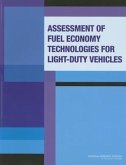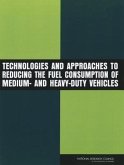Nanocomposite membranes have become a popular area of research in fuel cell technology due to their ability to enhance the performance of the fuel cells. Fuel cells convert chemical energy from a fuel into electrical energy, making them a promising source of clean and efficient power. However, conventional fuel cell membranes are limited by issues such as high cost, low durability, and poor performance at high temperatures. Nanocomposite membranes have the potential to overcome these limitations and improve the overall efficiency and durability of fuel cells. Nanocomposite membranes are composed of a polymer matrix infused with nanoparticles. The nanoparticles are typically composed of materials such as silica, titanium dioxide, or zirconium oxide. These materials have unique properties that can improve the performance of the membrane by enhancing ion conductivity, mechanical strength, and chemical stability. One of the main advantages of using nanocomposite membranes in fuel cells is their improved mechanical properties. Conventional fuel cell membranes are often brittle and prone to cracking, which can lead to leaks and decreased efficiency. By adding nanoparticles to the polymer matrix, nanocomposite membranes can increase their tensile strength, toughness, and resistance to deformation. This makes them more durable and less prone to failure, even in harsh operating conditions. Another advantage of nanocomposite membranes is their improved ion conductivity. In fuel cells, ions such as hydrogen and oxygen need to move through the membrane to generate electricity. Nanoparticles can enhance ion conductivity by creating a more uniform and interconnected network of pores within the membrane. This allows for faster and more efficient ion transport, which can increase the overall power output of the fuel cell. In addition to their mechanical and electrical properties, nanocomposite membranes also offer improved chemical stability. Fuel cells often operate at high temperatures and in harsh chemical environments, which can degrade the membrane over time. Nanoparticles can improve the chemical stability of the membrane by providing a barrier against chemical attack and reducing the degradation caused by exposure to high temperatures and reactive species. Overall, nanocomposite membranes have shown great promise in improving the performance and durability of fuel cells. They offer a number of advantages over conventional membranes, including improved mechanical properties, ion conductivity, and chemical stability. As research in this area continues, it is likely that nanocomposite membranes will play an increasingly important role in the development of more efficient and durable fuel cells.








